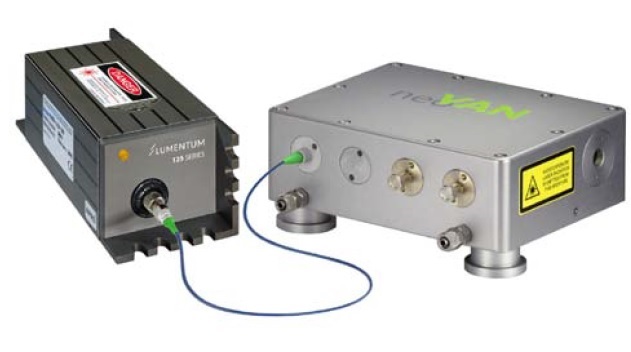January, 2016
neoLASE provides MOPA laser systems by combining innovative seed laser sources with well-established and reliable solid state laser amplifiers. A new developed, compact laser amplifier system will now enable power scaling of high stability single-frequency radiation with unique flexibility.
The increasing demands in laser technologies require highly flexible and comprehensive laser system designs. For these areas neoLASE developed a new, highly stable and low noise single-frequency MOPA system for the use in gravitational wave detection, atom cooling or bio photonics. The systems enables plug and play compatibility by using a fiber coupled NPRO [1] with an output power of 30 mW that is amplified by a neoVAN amplifier module up to 7W. A full system characterization at the Max-Planck-Institut für Gravitationsphysik [2] showed that the excellent properties of the NPRO keep nearly unchanged by the about 100 times output power scaling. The beam quality was measured with a so called mode-cleaner [3] and showed a 98% overlap to the Gaussian fundamental mode which only slightly differs to the NPRO itself. Further characteristics like intensity noise, frequency noise or beam stability where investigated and showed no substantial change compared to the seed laser. Further power scaling is possible by the well established neoVAN amplifier modules [4].
More information at www.neolase.com
1. Lumentum NPRO Series
2. P. Oppermann et al., to be published
3. Patrick Kwee and Benno Willke, "Automatic laser beam characterization of monolithic Nd:YAG nonplanar ring lasers," Appl. Opt. 47, 6022-6032 (2008)
4. Stabilized high-power laser system for the gravitational wave detector advanced LIGO , Optics Express Vol. 20, Issue 10, pp. 10617-10634 (2012)












